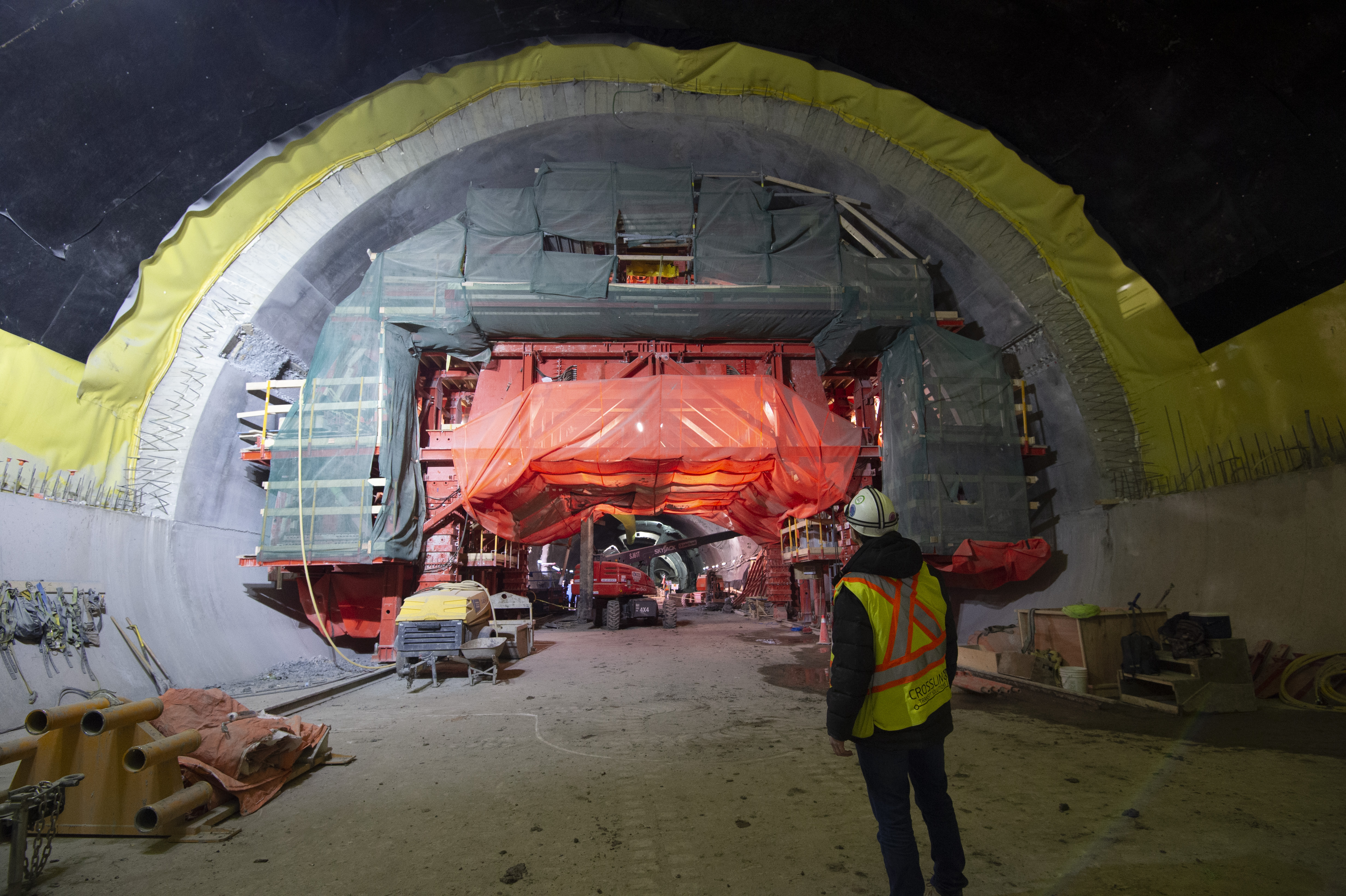Undead
Senior Member
Old but gold lolSaw this on my FB feed.......made me smile:
View attachment 612131
Source: https://scontent.fyto1-2.fna.fbcdn....xWMfTzuyAku-_DM41Hi6pivQdHzflGwxw&oe=673C8C22
Old but gold lolSaw this on my FB feed.......made me smile:
View attachment 612131
Source: https://scontent.fyto1-2.fna.fbcdn....xWMfTzuyAku-_DM41Hi6pivQdHzflGwxw&oe=673C8C22
Hypothetical question, but if there is a collision with a vehicle at the at-grade portion of the line, does that mean the entire underground and grade separated stretches of the central and western portions of the line have to halt operations?I'm dreading many, many collisions with passenger vehicles in the at-grade sections, especially in the early years.
No, that would be an awful design flaw. Trains drive both directions and there are several track crossovers, allowing zonal isolation in response to incidents.Hypothetical question, but if there is a collision with a vehicle at the at-grade portion of the line, does that mean the entire underground and grade separated stretches of the central and western portions of the line have to halt operations?
The above ground portion doesn't use cbtc does it? In Ottawa if a train breaks down they all stop everywhere for a few minutes while they reconfigure the system to route aroundNo, that would be an awful design flaw. Trains drive both directions and there are several track crossovers, allowing zonal isolation in response to incidents.

The above ground portion doesn't use cbtc does it?
The version of SelTrac used on the Finch West Line is a supervisory system with extremely limited ability to protect against headway deviation. It's an ATP.Finch LRT does [Thales SelTrac, derived from the Vancouver Skytrain system] primarily to prevent bunching and provide transit control feedback. Being able to slow down the vehicles in-front of a problem is useful for preventing large gaps in service. I'm not sure about Eglinton but I don't see why they would disable CBTC outside of the tunnelled portion: they'll still want to know where the trains are located.
In both cases a human oversight is also required to intervene for roadway traffic concerns.
CBTC does not mean full automation of service.
I don't think he knows anything - just like any of the other people at the City.At City Council, Mike Colle was blasting the Premier on Bill 212. During the rant, he makes a comment that "He should complete the f-ing Eglinton Crosstown. After 13 years, you'd think he would focus in on finding out why the Eglinton Crosstown tunnel is sinking."
I know folks here are adamant that there's no crack in the Eglinton - Yonge station box. But I'm very curious if there's basis for Colle's comment.
If the tunnels were sinking, they most certainly WOULD be testing them heavily! That's the whole point. Some sinkage would be expected - the question would be how much.If the tunnels were sinking they wouldn’t be testing them so frequently and so heavily.
With TTC staff now regularly in the tunnels, if there was something going on, TTC senior staff should know about it. Colle's son is the Chief Strategy and Customer Service Officer for the TTC. If something is wrong, then surely Mike Colle would have heard.I don't think he knows anything - just like any of the other people at the City.
This is a great opening for city reporters. CTV, Global, CBC --- where are you? Go interview Mike Colle and ask him what basis he has for that comment. Either it will turn out he made it up, or we will learn something we didn't know.At City Council, Mike Colle was blasting the Premier on Bill 212. During the rant, he makes a comment that "He should complete the f-ing Eglinton Crosstown. After 13 years, you'd think he would focus in on finding out why the Eglinton Crosstown tunnel is sinking."
I know folks here are adamant that there's no crack in the Eglinton - Yonge station box. But I'm very curious if there's basis for Colle's comment.
I figure that remark was a bit of a throwaway. It’s unfortunate it detracts from his main point: Bill 212’s approach to congestion takes away from the non-quick-fix solutions. (paraphrased)At City Council, Mike Colle was blasting the Premier on Bill 212. During the rant, he makes a comment that "He should complete the f-ing Eglinton Crosstown. After 13 years, you'd think he would focus in on finding out why the Eglinton Crosstown tunnel is sinking."
I know folks here are adamant that there's no crack in the Eglinton - Yonge station box. But I'm very curious if there's basis for Colle's comment.




